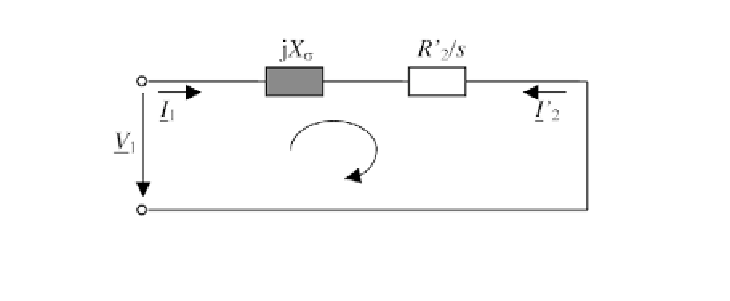Environmental Engineering Reference
In-Depth Information
Figure 5.30
Simplified One-phase Equivalent Circuit for an
Asynchronous Machine
Power balance
High generator efficiencies are very important for wind power plants because
the majority of the mechanical power of the rotor blades connected to the
generator should be converted to electrical power and fed into the grid. The
ratio of the electrical power output
P
1
to the mechanical power input
P
2
defines the generator efficiency
. Asynchronous generators that are used in
large wind generators can reach efficiencies over 95 per cent. Although the
efficiencies are very good, the remaining losses are still very important. Losses
in the range of 5 per cent at generator powers of more than 1000 MW produce
large amounts of waste heat that must be removed. Figure 5.31 shows the
power balance and the different losses of an asynchronous generator.
The available mechanical input power
P
2
at the clutch is reduced by
friction losses
P
f
due to mechanical and air friction. The rotor windings have
ohmic losses, the so-called copper losses
P
Cu2
. The iron losses
P
Fe2
at the rotor
can be neglected. The reduced air-gap power
P
g
is transferred from the rotor
to the stator. It is given by:
η
(5.101)
The copper losses
P
Cu2
of the rotor winding occur at resistance
R
'
2
(see Figure
5.28). For three-phase windings these losses become:
(5.102)
Figure 5.31
Power Balance for an Asynchronous Generator




